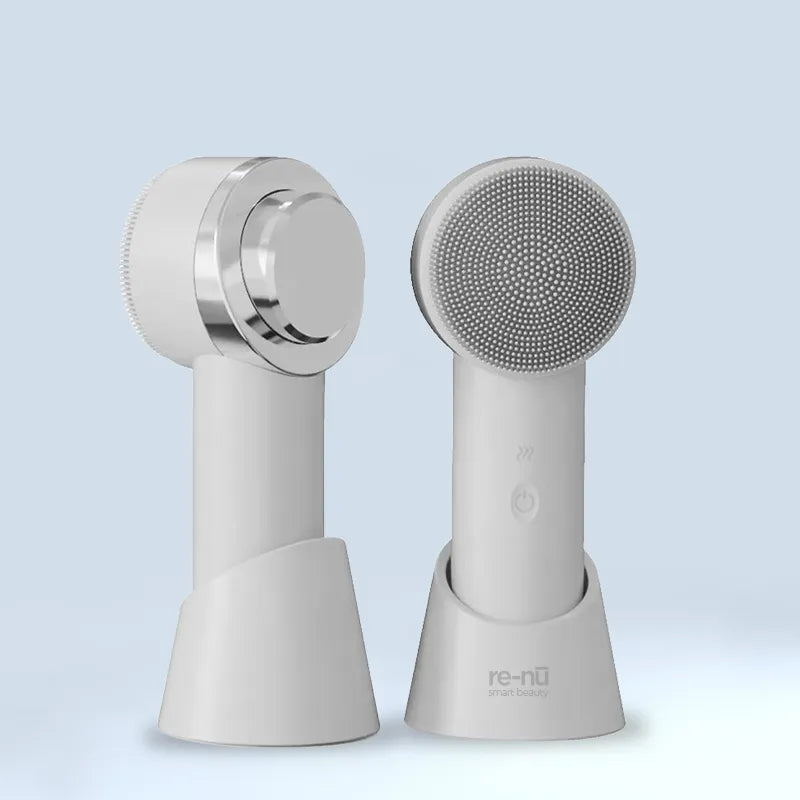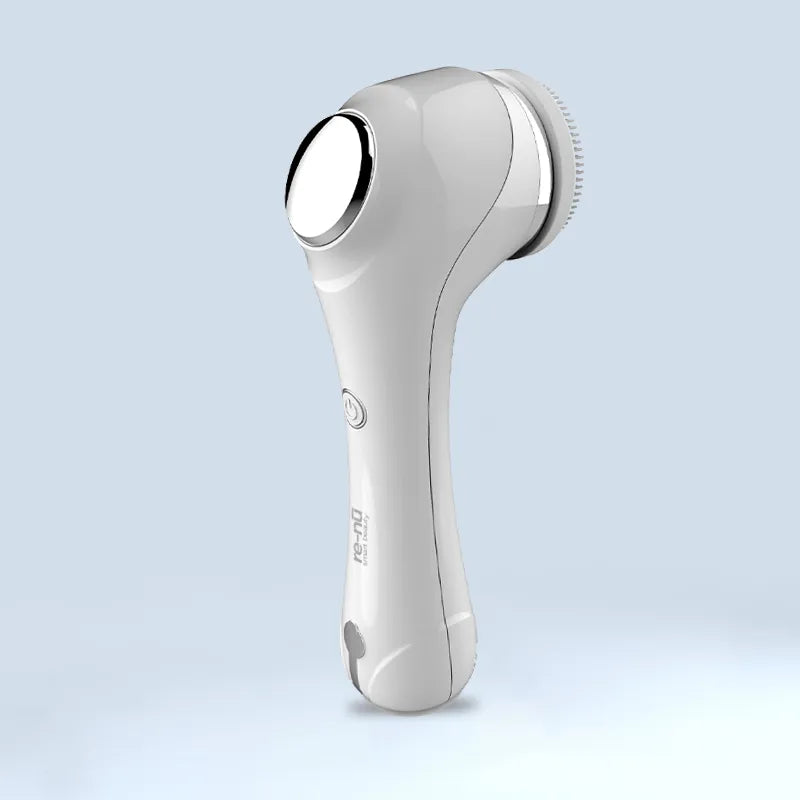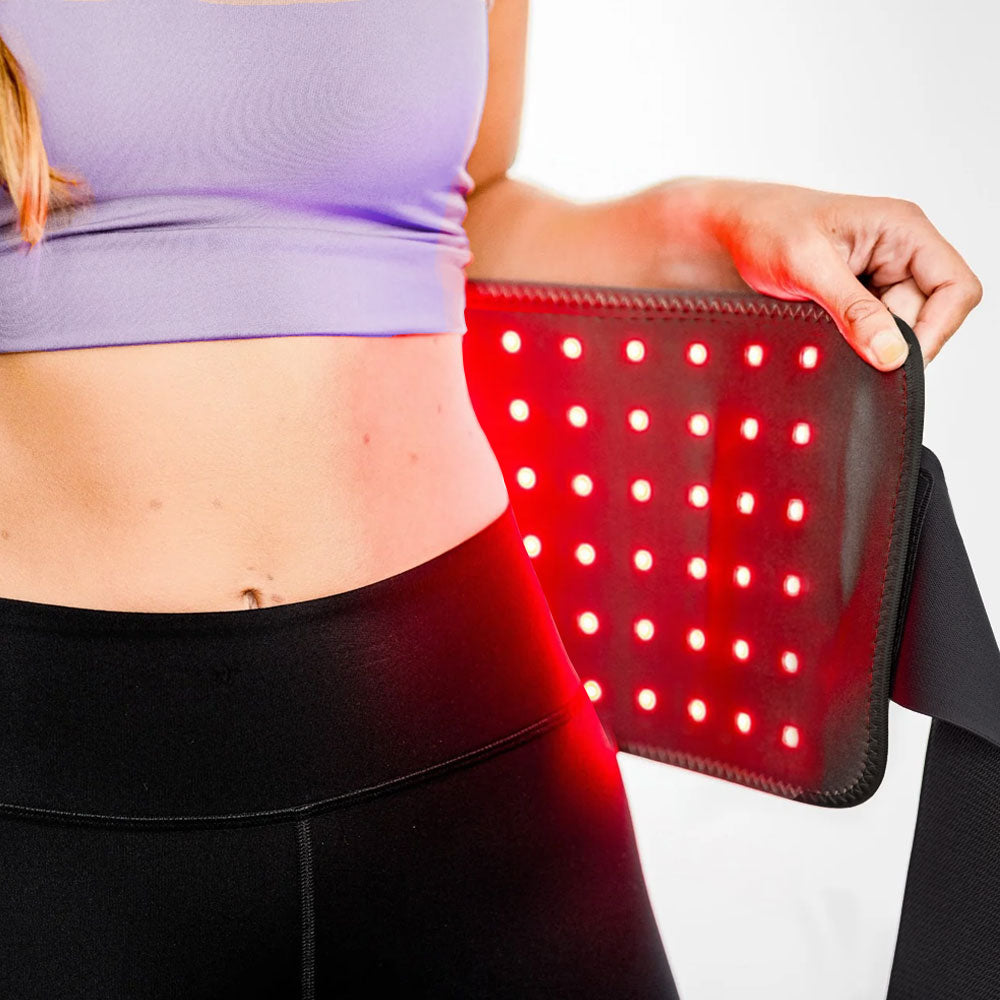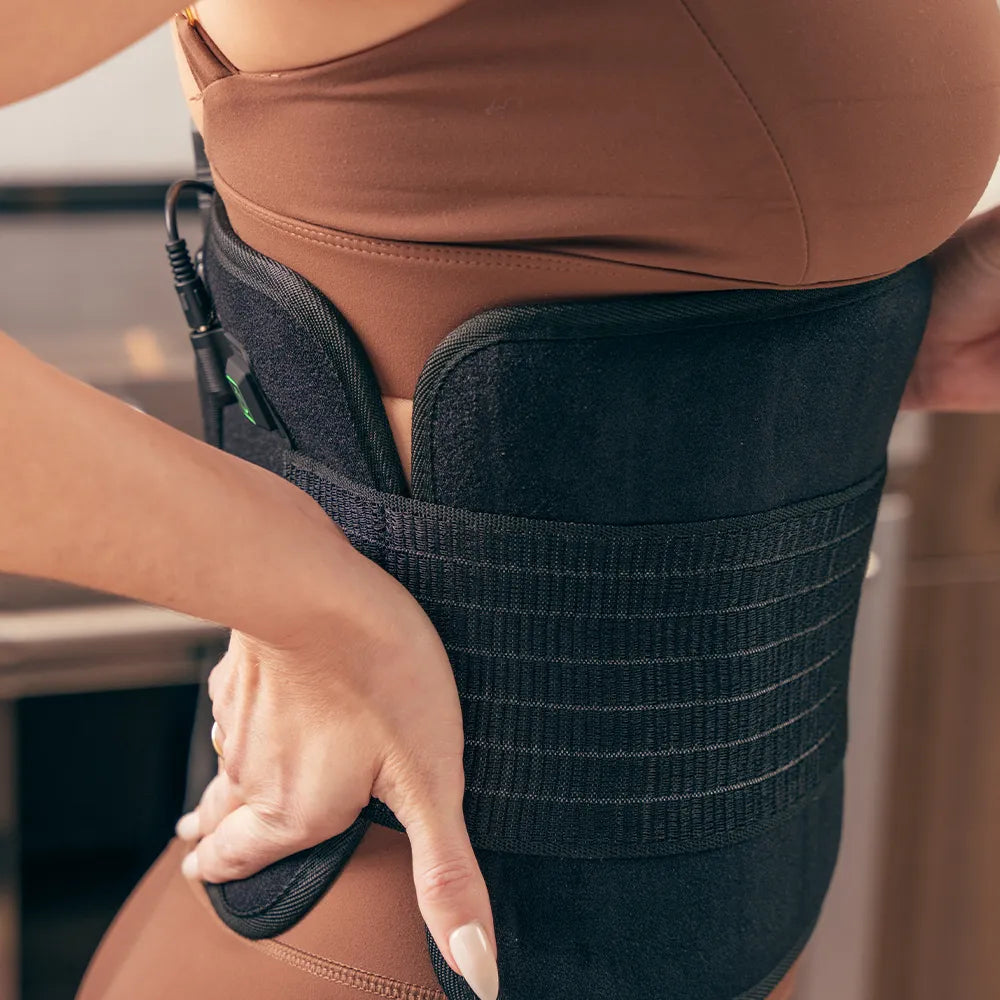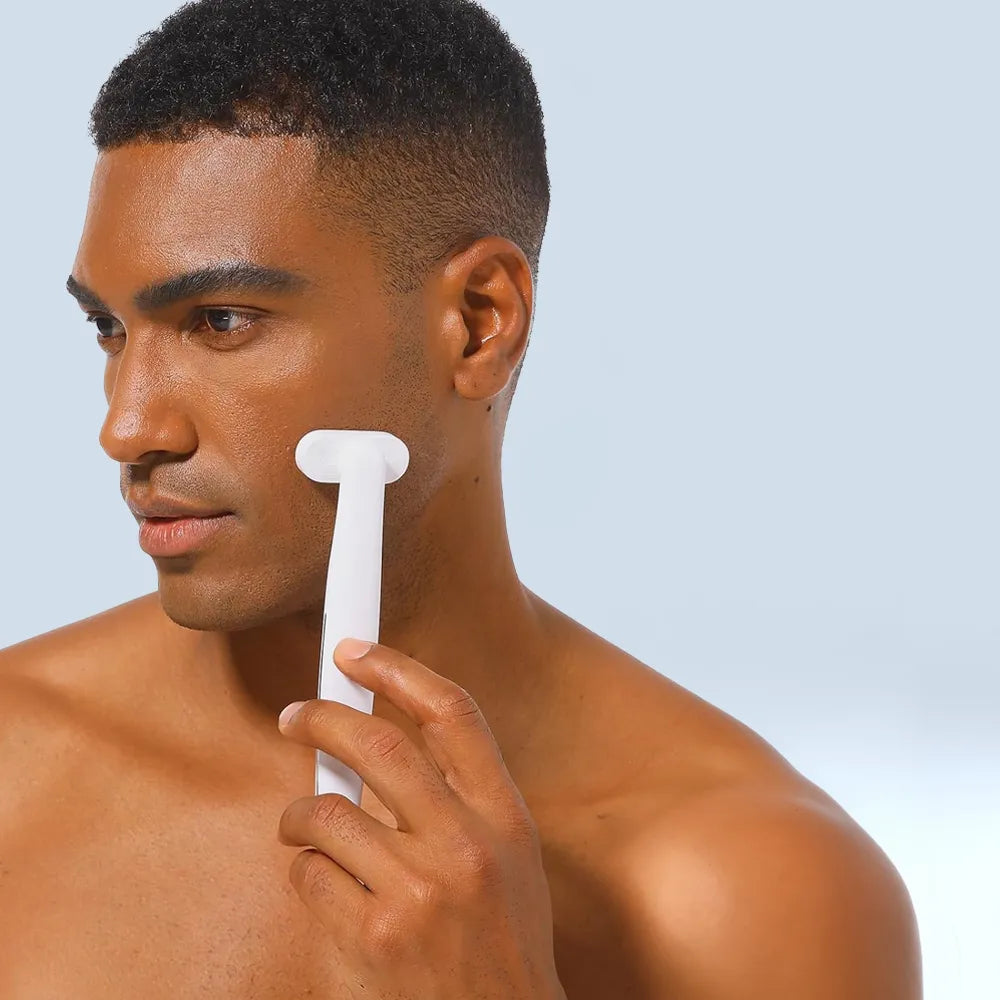




LED Skincare Tools for Radiant, Youthful, and Healthier Skin
GlowUp Acne LED Patch – At Home Blue Light Therapy for Acne
GlowUp Post-Acne LED Patch - LED Pimple Patch for Scar Treatment & Skin Healing
PurePulse Elite Sonic Brush with Heat – Deep Clean & Glow Boost
PureSpin Facial Cleansing Brush with EMS – Deep Clean & Radiance Boost
120 LED Red Light Therapy Belt for Skin Rejuvenation – Boost Collagen & Reduce Wrinkles
240 LED Red Light Therapy Belt – Promote Skin Health & Muscle Recovery
360 LED Red Light Therapy Belt – Best Red Light Therapy Device
LED Red Light Therapy Mat – Full-Body Infrared Light for Pain Relief & Recovery
120 LED Red Light Therapy Belt for Skin Rejuvenation – Boost Collagen & Reduce Wrinkles
240 LED Red Light Therapy Belt – Promote Skin Health & Muscle Recovery
360 LED Red Light Therapy Belt – Best Red Light Therapy Device
Cold Therapy EMS Dual Roller – 2-in-1 Cryo & Microcurrent Beauty Tool
GlowUp Acne LED Patch – At Home Blue Light Therapy for Acne
GlowUp Post-Acne LED Patch - LED Pimple Patch for Scar Treatment & Skin Healing
LED Light Therapy Wand – Red & Blue Light Skincare for Fine Lines & Acne
GlowUp LED 360° Light Therapy Wand - Charging Base for Timeless Glow

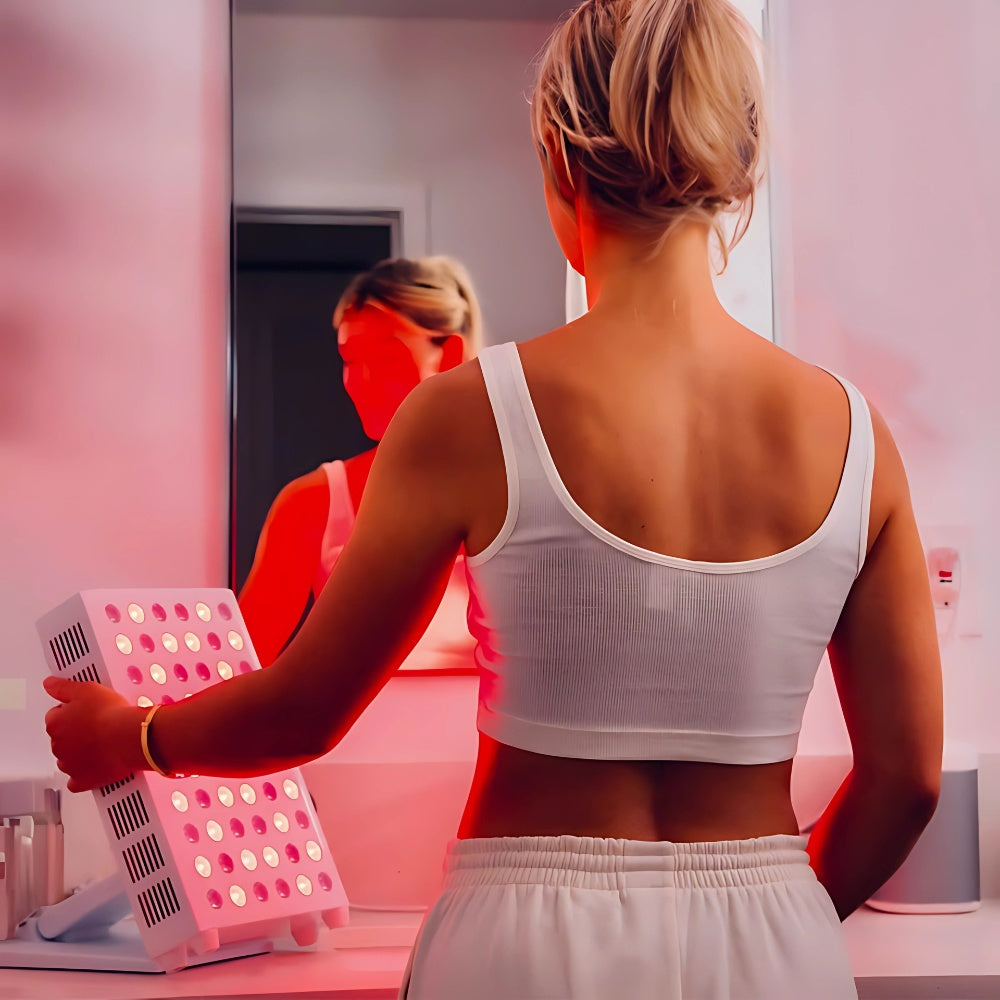
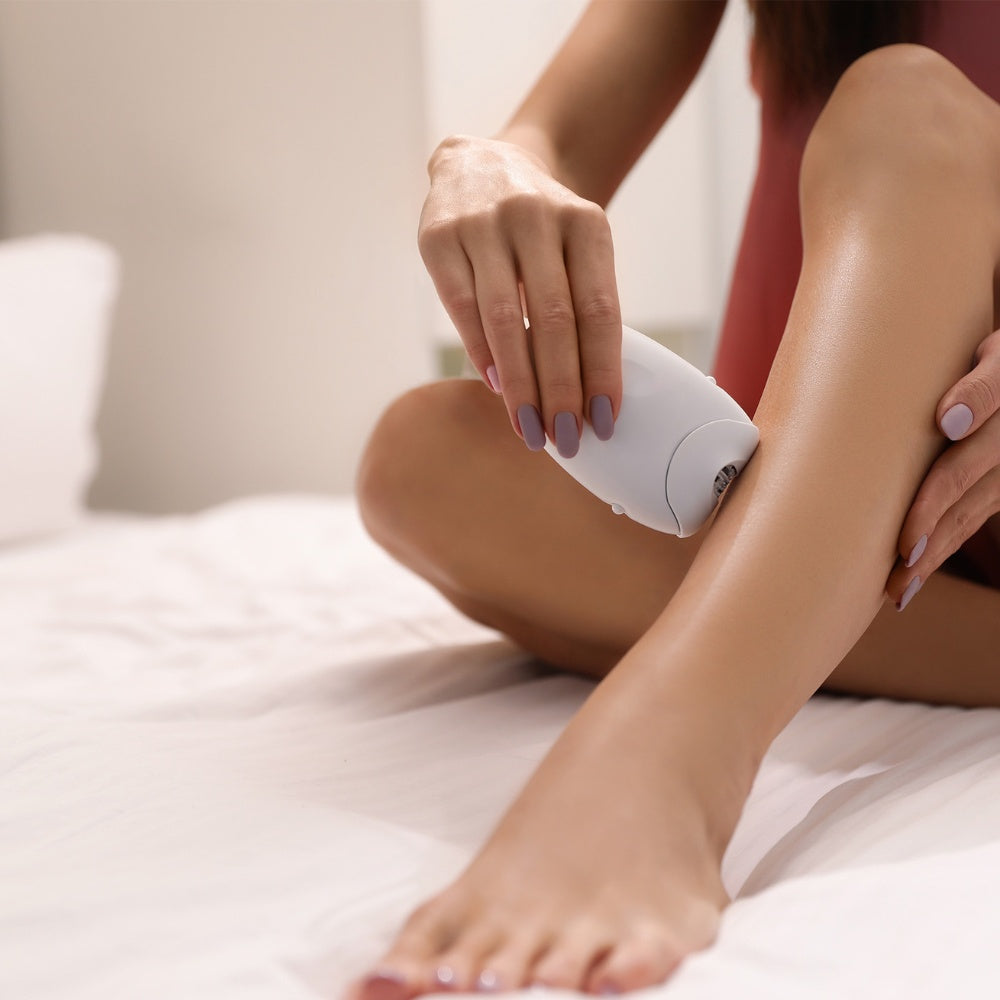
Find Your Ideal Beauty Device
Take our quick and easy quiz to get personalized recommendations based on your skin type, hair concerns, and beauty goals. Whether you're targeting acne, signs of aging, or hair thinning, we'll match you with the perfect LED skincare tools from our expert range.
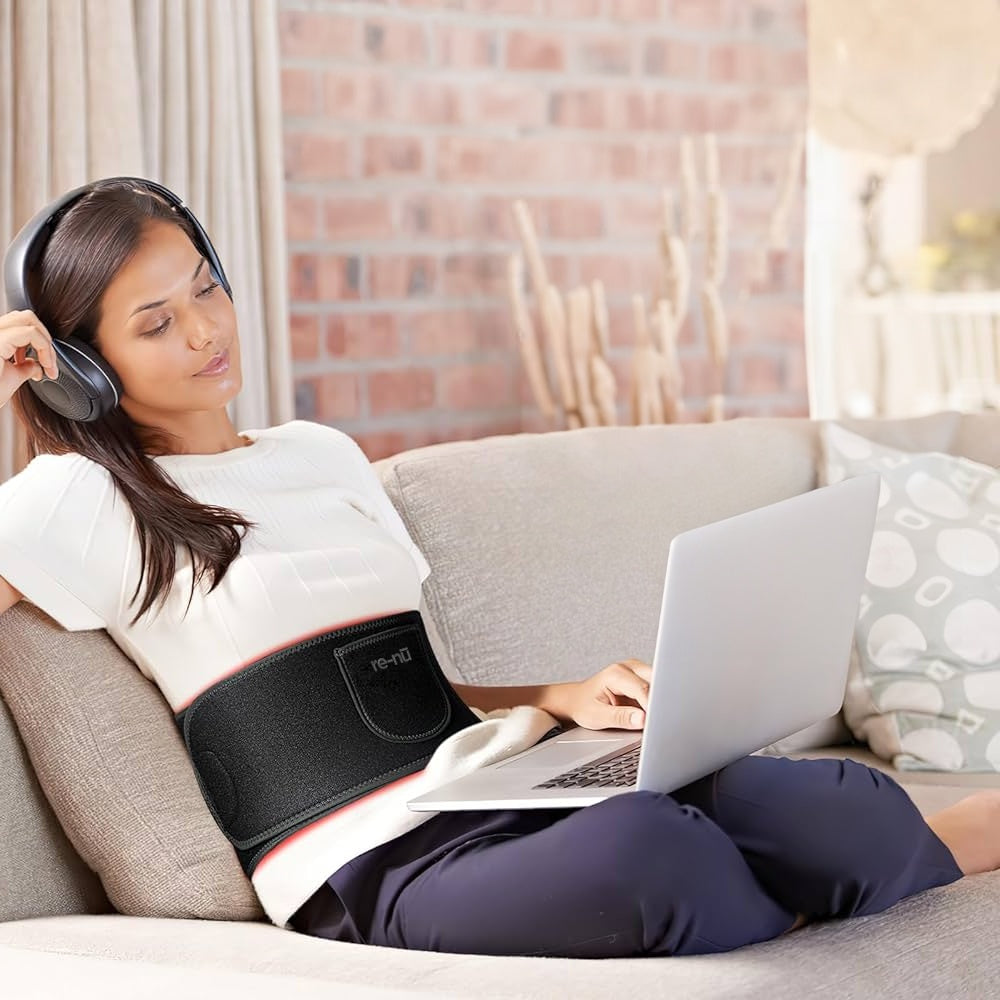
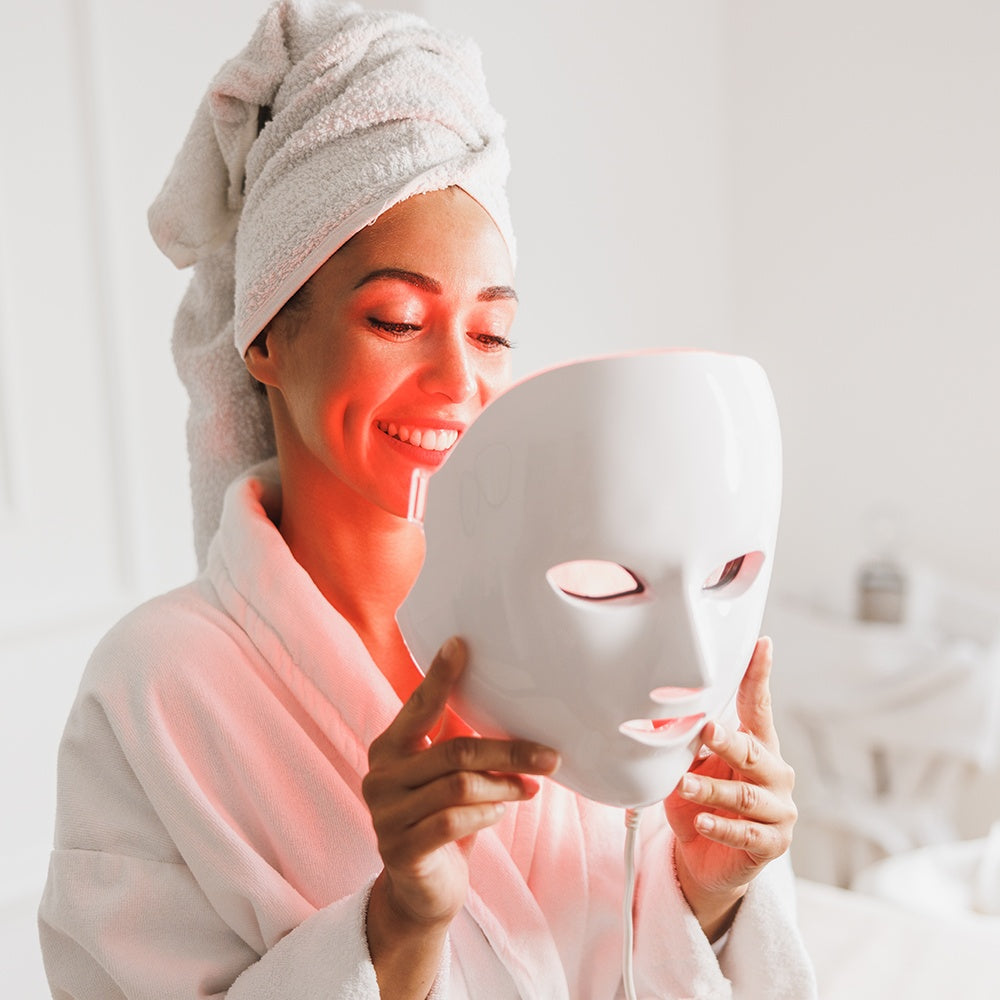
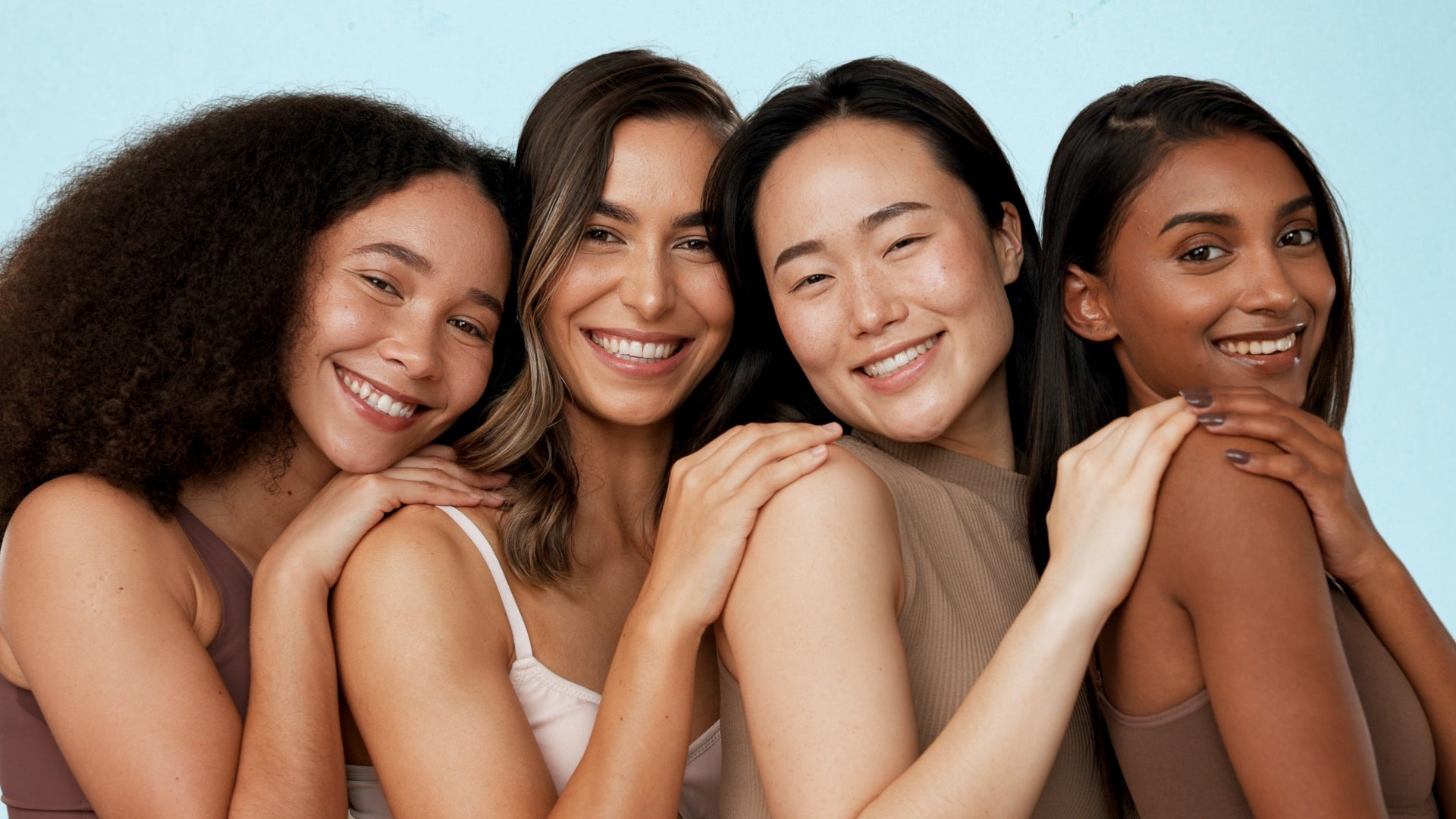
Beauty Routine with Proven Technology
At re-nū Smart Beauty, we’re revolutionizing the way you care for your skin and body. Our advanced at-home LED skincare tools deliver professional-grade technology in the comfort of your home—helping you achieve real, visible results without expensive salon visits. Whether you're aiming to boost radiance, reduce signs of aging, or refine your complexion, our mission is to empower you with smart, science-backed solutions that fit effortlessly into your daily routine.
Smart Beauty Starts Here
LED Light Therapy: Everything You Need to Know About This Beauty Breakthrough
In today’s dynamic world of beauty and skincare, LED Light Therapy has emerged as a revolutionary, science-backed solution for a wide range of skin concerns. From stubborn acne and inflammation to fine lines, wrinkles, and dull skin, this non-invasive technology uses targeted wavelengths of light to stimulate natural skin healing and rejuvenation processes. Whether you’re a beauty-conscious teen tackling breakouts, a skincare-savvy woman enhancing her routine, or someone seeking gentle, effective anti-aging care, LED therapy provides visible, long-term results without downtime. Suitable for all skin types and now widely available in both clinical and at-home devices, it’s quickly becoming a must-have for modern skincare. What is LED Light Therapy? LED (Light Emitting Diode) Light Therapy is a non-invasive skincare treatment that uses specific wavelengths of light to address common skin concerns such as acne, inflammation, wrinkles, and dullness. It works by penetrating the skin at different depths to stimulate natural cellular processes, promoting healthier, clearer, and more youthful-looking skin. What Does LED Light Therapy Do? Depending on the wavelength and color, LED light penetrates the skin at different depths, Acne Treatment – Blue light kills acne-causing bacteria and reduces inflammation. Wrinkle Reduction – Red light boosts collagen and elastin production to reduce fine lines. Hyperpigmentation – Green light helps fade dark spots, sun damage, and uneven skin tone. Skin Rejuvenation – Improves overall skin texture, glow, and firmness. Scar Healing – Aids in the repair of post-acne and wound scars. Redness and Rosacea Relief – Calms inflamed skin and reduces visible capillaries. Anti-Aging Maintenance – Slows down skin aging by enhancing cellular regeneration. Oil Control – Helps regulate sebum production to prevent clogged pores. Post-Treatment Recovery – Speeds up healing after cosmetic procedures like microdermabrasion or microneedling. Hair Growth Support – Red light is used to stimulate hair follicles for hair regrowth. Are There Different Kinds of LED Light Therapy? Yes! Each light color offers unique skincare benefits: Red Light: Stimulates collagen for anti-aging and wrinkle reduction. Blue Light: Kills acne bacteria, preventing breakouts. Green Light: Reduces pigmentation and evens skin tone. Yellow Light: Soothes sensitive skin and reduces redness. Near-infrared light penetrates deepest. Does LED Light Therapy Actually Work? Clinical studies confirm that consistent LED Light Therapy sessions significantly enhance skin texture, even out skin tone, and boost overall clarity. Red light stimulates collagen production for smoother, firmer skin; blue light targets acne-causing bacteria; and green light helps reduce pigmentation and redness. While in-clinic treatments typically deliver quicker, more intense results due to higher light output, modern at-home devices have advanced to offer impressive outcomes with regular use. For the best results, consistency is key—using your LED skincare tool just a few times a week can lead to visible, lasting improvements over time. Plus, at-home options are more affordable and seamlessly fit into your daily beauty routine without the hassle of appointments. What Doesn’t LED Light Therapy Treat? While LED light therapy offers impressive benefits, it’s important to understand its limitations. This non-invasive treatment is ideal for addressing surface-level concerns like mild to moderate acne, fine lines, redness, and uneven tone. However, it is not recommended as a standalone solution for deeper skin issues such as severe acne (like cystic acne), deep-set scars, or significant skin laxity (sagging skin). These conditions typically require more intensive medical procedures such as laser therapy, microneedling, or surgical interventions. Additionally, results from LED therapy vary greatly depending on skin type, age, and the specific concern being treated. Individuals with darker skin tones may experience slower results, and those with chronic skin conditions should consult a dermatologist before use. While LED therapy can complement clinical treatments, it should not be considered a replacement for professional dermatological care. How Long Does It Take for LED Light Therapy to Work? Typically, visible results appear within 4–6 weeks with consistent use (3–5 times per week). Professional sessions may show results sooner. Maintenance is essential to prolong the benefits. Who Should Not Use LED Light Therapy? People with photosensitivity, certain skin conditions like rosacea or lupus, or those on medications like Accutane should avoid LED therapy. Consulting a dermatologist beforehand is essential. See contraindications on DermNet What Happens Before LED Light Therapy? Before treatment, cleanse your face thoroughly. Avoid heavy makeup, exfoliants, or harsh serums. A consultation with your skincare expert helps tailor the therapy to your needs. Tips from WebMD What Happens During In-Office LED Therapy? During a session, you’ll wear protective goggles while a panel or mask of LED lights is placed over your face. The procedure is painless and usually lasts 20–30 minutes. How to Use an At-Home LED Light Therapy Device At-home LED light therapy devices—such as face masks, handheld wands, and light panels—offer a convenient way to incorporate professional-level skincare into your routine. To get the best results, start with a clean, dry face. Use a gentle cleanser to remove dirt, oil, and makeup, ensuring your skin is primed to absorb the light effectively.Next, position the LED device on your skin or wear it as instructed. Most sessions last between 10 to 20 minutes, depending on the device and the concern being treated (e.g., blue light for acne, red light for anti-aging, or green light for pigmentation). It's crucial to follow the manufacturer's guidelines regarding duration, frequency, and distance from the skin. After the session, apply a hydrating serum or moisturizer—ideally with ingredients like hyaluronic acid, peptides, or niacinamide—to lock in moisture and enhance your results. For sensitive skin types, it’s best to start with shorter sessions and gradually increase exposure. Consistency is key. Using your device 3–5 times a week can yield visible improvements over several weeks. Avoid using LED therapy right after exfoliation or treatments that make skin more photosensitive. What Happens After LED Light Therapy? One of the major advantages of LED light therapy is the lack of downtime. After your session—whether done in-office or with an at-home device—you can resume your regular skincare routine immediately. This includes cleansing, moisturizing, and using serums as usual. However, for optimal results and skin protection, it’s important to take a few post-treatment precautions: Apply a broad-spectrum sunscreen (SPF 30 or higher) to protect your skin from UV rays, as freshly treated skin can be more sensitive to sunlight. Avoid direct sun exposure for at least 4–6 hours after treatment to minimize the risk of irritation or pigmentation. Skip harsh exfoliants or retinoids immediately after treatment, especially if you have sensitive skin, to avoid potential redness or dryness. By following these simple steps, you can safely enjoy the benefits of LED therapy while keeping your skin protected and radiant. What Are the Benefits of LED Light Therapy? LED light therapy offers a wide range of clinically supported skincare benefits, making it a popular choice for those seeking safe, non-invasive rejuvenation. One of its primary advantages is stimulating collagen and elastin production, which helps reduce the appearance of fine lines and wrinkles, resulting in firmer, more youthful-looking skin. For those struggling with acne, blue light targets acne-causing bacteria (Propionibacterium acnes), reducing breakouts and preventing future flare-ups. Red light helps reduce inflammation, calms irritated skin, and accelerates healing, making it especially effective for post-acne marks and sensitive skin. LED therapy also helps improve overall skin tone and texture by increasing microcirculation and supporting the skin’s natural regeneration process. This leads to brighter, smoother, and more even-toned skin over time. Another benefit is its suitability for all skin types, including mature, dry, oily, or combination skin. With regular use, users often notice smaller pores, reduced redness, and a visible glow without the risks of harsh chemical treatments or downtime. What Are the Risks of LED Light Therapy? Side effects are rare but may include temporary redness or dryness. Always buy FDA-cleared devices and follow usage guidelines to ensure safety. Is LED Light Therapy Right for Me? LED light therapy is an excellent option for individuals with mild to moderate skin concerns such as acne, early signs of aging, redness, or uneven skin tone. It's particularly suited for those seeking non-invasive, pain-free treatments that require no downtime. The therapy works well as part of a regular skincare routine and can enhance the effectiveness of other skincare products. However, individual results may vary based on skin type, age, and underlying conditions. Those with sensitive skin, rosacea, or pigmentation issues may benefit from specific wavelengths more than others. Additionally, people with certain medical conditions or who are on photosensitizing medications should proceed with caution. For best results and safety, it’s always recommended to consult with a dermatologist or licensed skincare professional before starting LED light therapy—especially if you have chronic skin issues or are using prescription treatments. What’s the Recovery Time After LED Light Therapy? There’s virtually no recovery time. You can return to your routine immediately after treatment, making it ideal for busy lifestyles. Final Thoughts: Beauty Backed by Light and Science LED Light Therapy combines advanced skincare technology with daily self-care, offering clinically backed benefits for various skin concerns like acne, aging, and uneven tone. Whether used at home or in a professional setting, it delivers visible improvements with consistent use. Choosing a trusted brand ensures safety, quality, and effectiveness—helping you integrate smart beauty seamlessly into your routine for long-term results.
Learn more18 Powerful Healthy Anti-Aging Strategies You Can Start Today
Aging is a natural and beautiful journey — a reflection of our experiences, resilience, and personal growth. Yet today, thanks to advancements in skincare, health science, and wellness, we have more opportunities than ever to age not just gracefully, but powerfully and intentionally.At ReNu Smart Beauty, we believe aging should be celebrated, not feared. Our mission is to empower you with the latest skin innovations, proven health strategies, and smart lifestyle choices that support vibrant living at every stage.We are committed to helping you feel confident, radiant, and energized, with tools that nurture your inner vitality and enhance your outer glow. Through a combination of smart beauty technology — like LED light therapy — cutting-edge skincare, balanced nutrition, mindful movement, and daily self-care, you can unlock your most vibrant, youthful self.Aging isn't about fighting time — it's about working in harmony with it, giving your body and spirit the attention they deserve. At every age, you deserve to feel strong, luminous, and unstoppable. Let’s dive into the 18 essential, science-backed anti-aging strategies that actually make a difference. 1. Wear Sunscreen Every Single Day It doesn’t matter if it’s cloudy, snowy, or you’re indoors — UV rays are stealthy and can cause up to 90% of visible skin aging. Daily sunscreen use protects you from fine lines, wrinkles, dark spots, and even skin cancer. Pro tip: Choose a broad-spectrum SPF 30 or higher, and reapply every 2 hours. Mineral sunscreens with zinc oxide or titanium dioxide are gentle and super effective. 2. Take Care of Your Skin with Smart Beauty Tech Today’s skincare isn’t just creams and serums. Devices like LED therapy masks enhance collagen production, fight acne, and improve skin elasticity — all from the comfort of your home. Invest in a smart skincare routine with technology that works beneath the surface, not just on top. 3. Try Retinoids — The Gold Standard for Anti-Aging Retinoids (like retinol and tretinoin) are dermatologist favorites for a reason. They boost collagen, smooth fine lines, and speed up skin renewal. Start slow (think 2–3 times a week) to minimize irritation, and always use sunscreen, as retinoids can make your skin more sun-sensitive. 4. Protect Your Hands — They Show Age Fast Your hands are constantly exposed and often overlooked. Thin skin, sunspots, and loss of volume can make hands look older than your face. Daily SPF, a good hand cream, and occasional LED therapy can help your hands stay youthful and strong. 5. Do Not Smoke Smoking isn’t just bad for your lungs — it literally chokes your skin by cutting off oxygen and nutrients. Smokers develop deep wrinkles, dullness, and uneven skin tone far earlier than non-smokers. If you need a sign to quit, this is it. Your skin (and your entire body) will thank you. 6. Eat a Balanced, Nutrient-Rich Diet You are what you eat! A colorful diet rich in fruits, vegetables, lean proteins, and healthy fats floods your body with antioxidants that fight off free radical damage. Think berries, spinach, salmon, avocados, nuts — your anti-aging allies. 7. Fill Up on Fermented Foods Gut health = skin health. Yogurt, kimchi, sauerkraut, kefir — these fermented foods pack probiotics that strengthen your gut microbiome, leading to better digestion, reduced inflammation, and a clearer, glowier complexion. 8. Reduce Your Sodium Intake Too much salt leads to water retention, puffiness, and puts stress on your heart and kidneys. Stick to natural, whole foods and flavor meals with herbs and spices instead of reaching for the salt shaker. 9. Drink Plenty of Water Hydration is your beauty BFF. Well-hydrated skin appears plumper, smoother, and more resilient. Aim for at least 8 glasses of water daily — more if you're active or live in a dry climate. Bonus: herbal teas count too! 10. Minimize Your Alcohol Intake Alcohol dehydrates your skin, enlarges blood vessels, and speeds up aging signs like sagging and dullness. You don’t have to give up your favorite wine entirely — just practice moderation, and always hydrate alongside. 11. Get Enough High-Quality Sleep Beauty sleep is real. During deep sleep, your body produces collagen and repairs daily cellular damage. Skimping on sleep accelerates skin aging and boosts cortisol (the stress hormone). Create a relaxing bedtime routine — dim lights, a little meditation, no screens — and aim for 7–9 hours nightly. 12. Stay Physically Active Regular exercise pumps oxygen and nutrients to your skin, reduces stress, and stimulates collagen production. Find activities you love — brisk walks, yoga, dancing, strength training — and aim for at least 150 minutes of moderate exercise per week. 13. Manage Your Stress (Yes, It Shows) Chronic stress triggers inflammation and breaks down collagen. Plus, frown lines are real! Prioritize mindfulness practices like meditation, deep breathing, journaling, or simply unplugging from devices once a day. 14. Improve Your Posture Standing tall isn’t just about looking confident — it also keeps your spine aligned, prevents back pain, and helps you appear younger and more energized. Practice yoga, Pilates, or posture exercises to counteract tech neck and slouching. 15. Use Whitening Toothpaste for a Bright Smile A bright, white smile can take years off your appearance. Whitening toothpaste with gentle ingredients can lift surface stains without damaging enamel. Regular dental checkups also keep your smile youthful and healthy. 16. Embrace LED Light Therapy for Skin Rejuvenation At-home LED devices like ReNu’s LED Facial Masks stimulate collagen, reduce inflammation, and target fine lines without pain or downtime. Consistent use can help reverse visible signs of aging and leave your skin looking fresher, smoother, and more radiant. 17. Prioritize Eye Care The skin around your eyes is the thinnest and first to show aging. Use a gentle eye cream with peptides or hyaluronic acid, wear sunglasses outdoors, and consider LED therapy treatments specifically designed for the eye area to reduce fine lines and puffiness. 18. Surround Yourself with Positive Energy Laughter, love, and community are the ultimate anti-aging secrets. Studies show people who maintain strong social ties and a positive outlook live longer, healthier, and happier lives. Spend time with people who uplift you — your glow will come from the inside out. Final Thoughts Aging is inevitable — but how you age is a choice. At ReNu Smart Beauty, we believe aging should be a celebration of wisdom, strength, and beauty. By embracing these 18 strategies and smart beauty technologies, you can look and feel your best at every age. Ready to take control of your glow? Explore our award-winning LED devices today and start your journey to radiant, timeless beauty. Shop ReNu Smart Beauty →
Learn moreThe Ultimate Skincare Routine for Every Skin Type: From Oily to Sensitive
Skincare isn’t one-size-fits-all. What works wonders for someone with dry, flaky skin might be a disaster for someone with acne-prone or oily skin. Understanding your skin type and building a personalized skincare routine is key to achieving glowing, healthy skin. Whether your skin is oily, dry, combination, normal, or sensitive, this guide breaks down the best routine and products to suit your skin’s unique needs—with expert tips, ingredient recommendations, and pro-level insight. First Things First: Know Your Skin Type Understanding your skin type is the foundation of an effective skincare routine. Think of it like choosing the right fuel for your car—if you don’t know what your skin needs, you could end up doing more harm than good. Everyone’s skin has a unique balance of oil production, hydration, and sensitivity. Some people produce excess oil that leads to shine and clogged pores, while others struggle with dryness that causes flaking or tightness. Then there are those who have a mix of both, or skin that reacts easily to environmental stressors or certain ingredients. Identifying your skin type isn’t about putting yourself in a rigid category—it’s about listening to your skin’s signals. If you’re unsure, try washing your face, letting it sit for an hour without products, and observing how it feels. Oily skin will look shiny, dry skin will feel tight, and combination skin will likely have an oily T-zone with dry cheeks. Sensitive skin may show redness or feel irritated. Knowing where you stand is the first step to giving your skin exactly what it needs. Morning Skincare Routine for Every Skin Type Your morning skincare routine is all about protection and setting the tone for your day. Think of it as prepping your skin to face the elements—UV rays, pollution, blue light from screens, and even stress. For oily skin, it’s crucial to control shine and prevent future breakouts without stripping natural oils. On the other hand, dry and sensitive skin needs moisture and barrier support to prevent flakiness and irritation. Combination and normal skin types benefit from gentle, balancing formulas that don’t overwhelm. One of the biggest misconceptions is that you need a complicated 10-step routine—honestly, less is often more. What matters most is using the right ingredients in the right order. Start with a cleanser suited to your skin type, follow with a toner (yes, they’re still relevant!), add a targeted serum, seal it all in with moisturizer, and finish with a broad-spectrum sunscreen. A consistent, well-chosen routine—even if it’s just 3-4 steps—can keep your skin healthy, resilient, and glowing. 1. Cleanser Oily/Combination: Opt for a gel or foaming cleanser with salicylic acid or tea tree oil to control oil and prevent breakouts. Dry/Sensitive: Use a hydrating cream or milk cleanser with ceramides or hyaluronic acid to avoid stripping natural oils. Normal: A gentle cleanser that maintains your skin’s balance is ideal. Tip: Avoid over-cleansing. Twice a day is enough unless you've been sweating heavily. 2. Toner Oily: Look for toners with witch hazel, niacinamide, or BHA to refine pores.Dry: Choose alcohol-free, hydrating toners with glycerin or rose water.Sensitive: Use a calming toner with chamomile or aloe vera. Toners help rebalance the skin’s pH and prepare it for deeper absorption of serums. 3. Serum Serums are the powerhouses of your routine—targeting specific concerns. Oily/Acne-Prone: Go for a niacinamide serum to reduce sebum and minimize pores.Dry: Use hyaluronic acid serum to draw in moisture.Sensitive: Try azelaic acid or centella asiatica for redness and inflammation.Anti-aging concerns? Everyone can benefit from a vitamin C serum for brightening and antioxidant protection. 4. Moisturizer Yes, even oily skin needs moisturizer! Oily: Light, oil-free, gel-based moisturizers with non-comedogenic ingredients.Dry: Rich, emollient creams with ceramides, shea butter, or squalane.Sensitive: Fragrance-free, minimal-ingredient formulas to avoid irritation.Normal: Lightweight creams with hydrating and nourishing ingredients work best. 5. Sunscreen (SPF 30 or higher) Every. Single. Day. No exceptions. Oily/Sensitive: Look for mineral-based SPF (zinc oxide or titanium dioxide).Dry: A moisturizing sunscreen can double up as your daytime hydrator.All skin types: Choose broad-spectrum protection to guard against UVA/UVB rays. Need a recommendation? The Skin Cancer Foundation breaks down SPF choices for every skin type. Night time Skincare Routine for Every Skin Type Night is your skin’s chance to repair and regenerate. Let’s make it count. While the morning routine focuses on protection, nighttime is where the real magic happens—this is when your skin absorbs nutrients best, and cell turnover speeds up. A solid evening regimen helps reverse damage from the day and fortifies your skin barrier. The key here is using products that support recovery, reduce inflammation, and treat specific concerns like acne, dryness, or early signs of aging. 1. Double Cleanse (If Wearing Makeup or Sunscreen) Start with an oil-based cleanser or micellar water to break down makeup and SPF. Follow with your regular cleanser. Oily skin tip: Oil cleansing won’t make you greasier—it helps dissolve excess sebum and purify pores. 2. Treatment Serums This is where you target problems like acne, hyperpigmentation, or aging. Oily/Acne: Retinoids (like adapalene or retinol), salicylic acid, or benzoyl peroxide can help.Dry: Use peptides or bakuchiol—a gentle, plant-based retinol alternative.Sensitive: Start with a low-strength niacinamide or gentle botanical extracts.Hyperpigmentation: Add in alpha arbutin, licorice root, or tranexamic acid. If you’re new to actives like retinol or acids, start slow (2–3x a week) to build tolerance. 3. Moisturizer (Again!) Lock in the good stuff with a nourishing night cream. Skin loses more moisture while you sleep, so hydration is key. Add occlusives (like petrolatum or lanolin) in winter if you have dry skin.Look for non-comedogenic labels if you’re acne-prone. 4. Extras (Optional but Powerful) Eye Cream: For puffiness, look for caffeine; for fine lines, peptides or retinol.Face Oil: For dry or mature skin, a few drops of argan or marula oil can boost hydration.Overnight Masks: A once-a-week hydration bomb—great for stressed or dry skin. Weekly Add-Ons: Exfoliation & Masks Exfoliating (1–2x/Week) Exfoliation is essential for sloughing off dead skin cells and promoting healthy turnover, but how you exfoliate depends on your skin type. Oily/Acne: BHA (like salicylic acid) unclogs pores.Dry/Dull: AHA (like glycolic or lactic acid) lifts dead skin and boosts glow.Sensitive: Try enzyme-based exfoliants or very low-strength lactic acid. Always follow with sunscreen the next day—exfoliated skin is more sun-sensitive. Face Masks (1–2x/Week) Face masks deliver concentrated ingredients that support your skin’s specific needs. Oily: Clay masks with kaolin or charcoal absorb oil and detoxify.Dry: Hydrating masks with honey, aloe, or hyaluronic acid restore softness.Combination: Multi-masking—use different masks on different parts of your face. Skincare by Season: Adjust with the Weather Just like your wardrobe changes with the seasons, so should your skincare. Your skin’s needs shift with temperature, humidity, and even daylight hours. In summer, your skin may produce more oil and sweat, making it essential to use lightweight, non-comedogenic products and to double down on SPF (especially with increased sun exposure). In contrast, winter air tends to be dry and harsh, stripping your skin of moisture and leaving it feeling tight or flaky. This is the time to embrace thicker moisturizers, hydrating serums, and protective balms. Spring and fall are ideal times to reset or introduce active ingredients, as your skin is usually more stable in these transition periods. Paying attention to seasonal shifts helps prevent common issues like breakouts, dullness, or irritation—and ensures that your routine evolves with your environment. Don’t be afraid to rotate products in and out
Learn more









